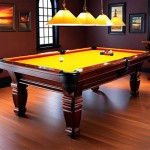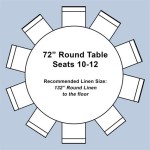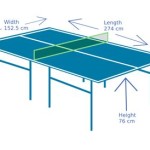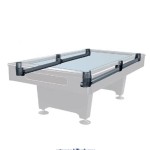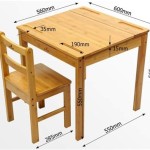Coffee Table Japanese Style: A Guide to Minimalist Elegance
Coffee tables, ubiquitous fixtures in living rooms around the world, often act as central hubs for relaxation, conversation, and even impromptu meals. Increasingly, homeowners are drawn to the calming aesthetic of Japanese design, seeking to incorporate it into their living spaces. The coffee table, being a prominent piece of furniture, offers a prime opportunity to introduce Japanese-inspired elements. This article explores the key characteristics of a Japanese-style coffee table, considering materials, design principles, and practical applications within a broader interior design context.
Key Elements of Japanese Inspired Coffee Table Design
Several core elements distinguish a Japanese-style coffee table from other designs. These elements typically reflect the broader principles of Japanese aesthetics, such as minimalism, naturalism, and a focus on functionality. Understanding these key aspects allows for a more informed selection process and a better integration of the coffee table into a Japanese-influenced living room.
One of the most recognizable features is the emphasis on clean lines and simple shapes. Intricate carvings or ornate detailing are generally absent in a traditional Japanese design. Instead, the focus is on the inherent beauty of the materials and the harmony created by the piece's proportions. This minimalist approach not only contributes to a sense of tranquility but also makes the coffee table highly versatile, allowing it to seamlessly blend with various interior styles.
Low height is another crucial characteristic. Japanese living spaces often prioritize floor seating, and the coffee table is designed to complement this lifestyle. A lower table encourages a more relaxed posture and facilitates interaction when seated on cushions or tatami mats. The height is typically between 10 to 16 inches, although variations exist depending on the specific style and intended use.
The use of natural materials is paramount. Wood, particularly light-colored varieties like cedar, cypress, or paulownia, is frequently employed. The natural grain and texture of the wood are often left exposed, adding to the organic feel. Other materials, such as bamboo or rattan, may also be incorporated, further emphasizing the connection with nature. The choice of finish is also important, with natural oils or water-based stains preferred over glossy varnishes, which can detract from the natural aesthetic.
Material Selection for Japanese Style Coffee Tables
The choice of materials greatly impacts the overall look and feel of a Japanese-style coffee table. Selecting appropriate materials not only enhances the aesthetic appeal but also contributes to the longevity and durability of the furniture piece. Each material offers distinct characteristics that align with the principles of Japanese design.
Solid wood is a common and highly desirable material. As mentioned previously, light-colored woods like cedar and cypress are popular choices due to their natural beauty and association with traditional Japanese architecture. These woods are also relatively lightweight, making the coffee table easier to move. However, darker woods, such as walnut or teak, can also be used to create a more contemporary interpretation of the Japanese style. In this case, the design principles of minimalism and clean lines should still be maintained.
Bamboo is another excellent option, offering a sustainable and visually appealing alternative to traditional wood. Bamboo is known for its strength and durability, making it suitable for furniture construction. It also possesses a unique grain pattern that adds visual interest. Bamboo furniture is often treated with natural oils to enhance its natural beauty and protect it from moisture.
Rattan, a natural fiber derived from palm trees, can be used for the entire coffee table or as an accent material. Rattan is lightweight and flexible, allowing for intricate weaving and design possibilities. It is often used to create woven tops or decorative elements that add texture and visual appeal. Like bamboo, rattan is a sustainable material that aligns with the eco-conscious aspects of Japanese design.
While less common in traditional styles, glass can be incorporated into contemporary Japanese-inspired coffee tables. Glass tops can create a sense of openness and lightness, allowing the beauty of the base material to be more visible. However, the glass should be tempered for safety, and the overall design should still adhere to the principles of minimalism and clean lines.
Integrating the Coffee Table into a Japanese-Inspired Living Room
Selecting a Japanese-style coffee table is only the first step in creating a cohesive and harmonious living space. Careful consideration must be given to how the coffee table integrates with the surrounding furniture, décor, and overall architectural style of the room. The goal is to create a balanced and tranquil environment that reflects the essence of Japanese design.
The color palette plays a crucial role. Neutral colors, such as white, beige, gray, and earth tones, are typically favored in Japanese-inspired interiors. These colors create a calming and serene atmosphere. The coffee table should complement the overall color scheme, either blending in seamlessly or providing a subtle contrast. Using natural wood tones will generally work well with these types of color palettes. Avoid bright or overly saturated colors, which can detract from the minimalist aesthetic.
Accompanying furniture should also reflect the principles of Japanese design. Low seating options, such as floor cushions or low-slung sofas, are ideal. Furniture should be simple in design and crafted from natural materials. Clutter should be minimized, with a focus on functional and well-chosen pieces. Consider using storage solutions, such as built-in shelves or minimalist cabinets, to keep the space tidy and organized.
Accessories should be carefully selected to enhance the overall aesthetic. A simple vase with a single flower, a carefully chosen ceramic bowl, or a small stack of books can add visual interest without overwhelming the space. Avoid excessive ornamentation or decorative items that do not serve a purpose. Consider incorporating natural elements, such as plants or stones, to further enhance the connection with nature.
Lighting is also an important factor. Soft, diffused lighting is preferred, as it creates a warm and inviting atmosphere. Natural light should be maximized whenever possible. Paper lanterns or lamps with shoji screens can be used to create a traditional Japanese ambiance. Avoid harsh overhead lighting, opting instead for table lamps or floor lamps that provide a more gentle illumination.
Finally, consider the overall flow and layout of the room. The coffee table should be positioned in a way that facilitates conversation and movement. Ensure that there is sufficient space around the coffee table for comfortable seating and access. The arrangement of furniture should create a sense of balance and harmony, reflecting the principles of Japanese design.
By carefully considering these factors, it is possible to integrate a Japanese-style coffee table into a living room to create a space that is both aesthetically pleasing and functionally efficient. The result is a serene and inviting environment that embodies the principles of minimalism, naturalism, and tranquility.

Astronova Japandi Solid Wood Coffee Table 100l X 60w 42 65h

Akagi Japanese Style Pure Solid Wood Coffee Table

Brandy Japanese Solid Wood Coffee Table 100cm

Japandi Coffee Table

Akagi Japanese Style Pure Solid Wood Coffee Table

Japanese Style Tatami Foldable Round Kang Table Low Tea Small Coffee Sitting Floor Window Sill Bay Lazada Singapore

Japanese Style Coffee Table Minimalist Solid Wood Furniture

Solid Wood Tea Table New Chinese Style Zen Log Coffee Japanese Tatami Kang Home Living Room

Modern Minimalist Solid Wood Tea Table Coffee Japanese Style With Drawer Cabinet Small Living Room Nordic Pine Babies Kids Baby Nursery Furniture Tables Chairs On

Japandi Round Wood Coffee Table

